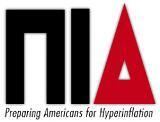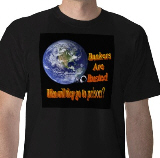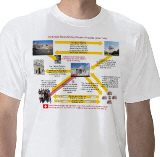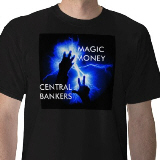 Another Friday passed with the closing of The Columbian Bank and Trust of Topeka, Kansas. Ben Bernanke is speaking in an amazing feat of poetry, comparing the economic storm in the United States to gale force winds that have not subsided. This is an almost startling admission from a man so conservative in his explanations. Bernanke is feeling confident about his strength and position.
Another Friday passed with the closing of The Columbian Bank and Trust of Topeka, Kansas. Ben Bernanke is speaking in an amazing feat of poetry, comparing the economic storm in the United States to gale force winds that have not subsided. This is an almost startling admission from a man so conservative in his explanations. Bernanke is feeling confident about his strength and position.
The appearance of the economy has weathered well so far without truly significant collateral damage for the public to see. Bernanke admits to being challenged with the “softening in economic activity and rising unemployment.” He readily admits that commodities boom is partly responsible for the dramatic rise in inflation instead of simply blaming inflation on energy futures.
The Fed is weathering the gale force storm by hanging tough and hoping for stability. Even “the experts” admit that the inflation outlook is uncertain, but will be a major concern through next year. If the Fed could find a way to control commodity prices, they would probably think they had it made. Bernanke hasn’t devised a way to harness the commodities market yet. Undoubtedly, that is in the works soon.
The Fed continues to work with other central bankers to provide plenty of liquidity for needy banking institutions that are still fearful of interbank lending. Banks continue to use Fed auctions liberally, with demand in excess of supply.
Bernanke admits the need to somehow strengthen the financial system beyond the sustenance that has already been provided. Suddenly, Bernanke is speaking about thorny issues “raised by the existence of financial institutions that may be perceived as ‘too big to fail’ and the moral hazard issues that may arise when governments intervene in a financial crisis.” In other words, Bernanke is expecting some large financial failures. Whether he is alluding to Fannie Mae and Freddie Mac or holding banks like Citi isn’t being admitted. He is sounding warning by his comments as the gale force winds blow. He also defended the need to cover for Bear Stearns almost six months ago. He apparently expects to do so again.
Bernanke has also admitted that the Fed is involved in finding a way to protect bankers from their own financial politics through automation and standards rather than avoiding the risk altogether. In other words, the Fed is seeking to minimize risk by continuing to engage in what has been discovered to be risky banking conduct. Hey, it’s good for business.
Bernanke even discusses covering pools of securitized bonds while seeking more power from Congress to settle a crisis without government intervention. That is good for the Fed’s business as well as the corporate oligarchy takes ever more responsibility for monetary policy and legal oversight from the hands of government. That is the idea in the eyes of the Fed.
 Bernanke believes that the more power that the Fed has, the less risk that there is to the system. He is convinced that by having more regulatory power to monitor individual institutions, he can eliminate moral hazard and promote financial resistance, perhaps by increasing capital requirements for banking. He wants to conduct “stress tests” to monitor liquidity, risk exposure and adverse circumstances. He wants to build a new financial regulatory empire operated by corporate global banking. Who is watching the Federal Reserve while all this wonderment is going on? Not a soul is watching the Fed. The Fed monitors itself and as far as the government and Congress are concerned, is “above reproach.”
Bernanke believes that the more power that the Fed has, the less risk that there is to the system. He is convinced that by having more regulatory power to monitor individual institutions, he can eliminate moral hazard and promote financial resistance, perhaps by increasing capital requirements for banking. He wants to conduct “stress tests” to monitor liquidity, risk exposure and adverse circumstances. He wants to build a new financial regulatory empire operated by corporate global banking. Who is watching the Federal Reserve while all this wonderment is going on? Not a soul is watching the Fed. The Fed monitors itself and as far as the government and Congress are concerned, is “above reproach.”
 The reality is that politicians have become thoroughly dependent on the International Society of Bankers. Fear should be firmed rooted in the hearts of politicians. World bankers have the nation of sheep by the private parts and are leading it down the primrose path of banking for sheering.
The reality is that politicians have become thoroughly dependent on the International Society of Bankers. Fear should be firmed rooted in the hearts of politicians. World bankers have the nation of sheep by the private parts and are leading it down the primrose path of banking for sheering.
~ E. Manning














Thanks for the information. Here’s my response if you find it of interest.
Commodity Trader Wall Calendar is an annual publication to help you keep track of your commodity trading activities irrespective of whichever commodities you are trading: agricultural (grains, and food and fiber), livestock & meat, energy, precious, rare & industrial metals, other minerals and materials…. This reference tool provides with a repository of the commodity and financial futures industry event data.
Comment by commodity calendar — August 25, 2008 @ 3:25 am